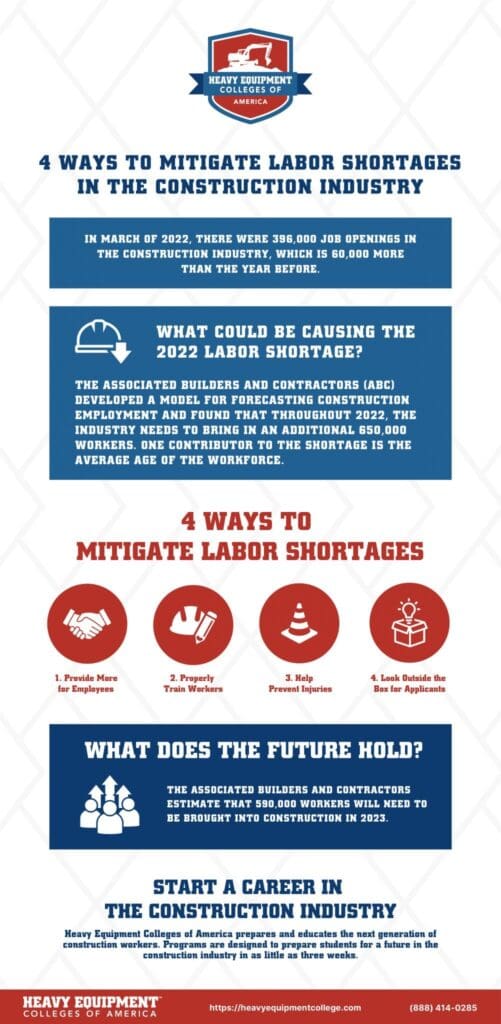In March of 2022, there were 396,000 job openings in the construction industry, which is 60,000 more than the year before. Construction workers build our future, and as many industries are struggling to fill job openings, the construction industry is no different. But there are ways to mitigate this labor shortage. Keep reading to explore some causes of the labor shortage, and discover four ways to reduce this shortage.
Table of Contents
What Could Be Causing the 2022 Labor Shortage?
The Associated Builders and Contractors (ABC) developed a model for forecasting construction employment and found that throughout 2022, the industry needs to bring in an additional 650,000 workers. One contributor to the shortage is the average age of the workforce. The median age is 42, and not enough younger workers are replacing retirees. A lack of skilled labor in construction able to handle complex jobs is another factor.
4 Ways to Mitigate a Labor Shortage
Here are four ideas for employers looking to fill jobs:
1. Provide More for Employees:
Competitive wages and benefits can entice prospective employees and lure in candidates from other fields. With the Great Resignation, 4.5 million workers have quit their jobs. More people are switching careers than ever before, so this is a chance to entice prospective employees with good wages, unique benefits, and outstanding company culture.
Companies that invest in their employees and provide plenty of opportunities for growth will stand out. Ways to do this are offering constant training, continuing education, and reimbursement for education.
2. Properly Train Workers:
Continuing to build the skills and knowledge base of employees will help on multiple fronts. Not only will it help workers perform their jobs more efficiently, but it increase safety on the job. Offering on-the-job training is another incentive for applicants.
3. Help Prevent Injuries:
In 2020, there were 2.5 occupational injuries on construction sites for every 100 full-time workers. Proper safety training, safety protocols, and a formal onboarding process promotes caution and care.
In addition to physical health, employers who support the mental well-being of their employees stand out from the rest. Construction workers have double the rate of substance abuse compared to the national average. An employee assistance program ensures employees who need help have access to resources.
4. Look Outside the Box for Applicants:
Construction workers are more likely to be male, which leaves out 51.1% of the population. There are various organizations aimed at getting more women involved in construction, such as the National Association of Women in Construction.
Make connections at local community colleges, high schools, and trade schools to offer training programs for students.
Look to organizations such as Helmets to Hardhats which is geared toward training military service members for careers in construction.

What Does the Future Hold?
The Associated Builders and Contractors estimate that 590,000 workers will need to be brought into construction in 2023. On top of that, in March 2021, the Biden-Harris infrastructure program announced an increase in construction projects with $1.5 trillion going toward infrastructure.
Start a Career in the Construction Industry
The future of the heavy equipment industry is bright for those who receive the proper education. Heavy Equipment Colleges of America prepares and educates the next generation of construction workers. Programs are designed to prepare students for a future in the construction industry in as little as three weeks. Courses emphasize heavy equipment operation, safety and preventative maintenance, and construction site fundamentals.
Find the location nearest you to start your journey. Enroll online now or call (888) 414-0285 to get started.

